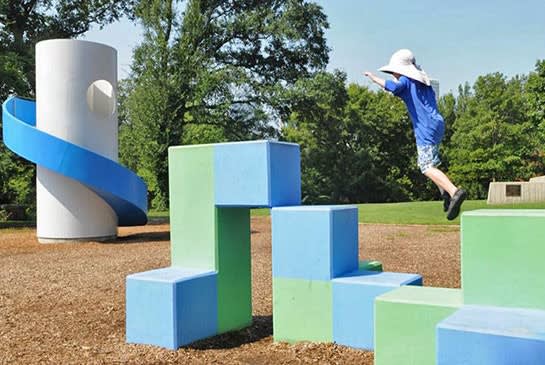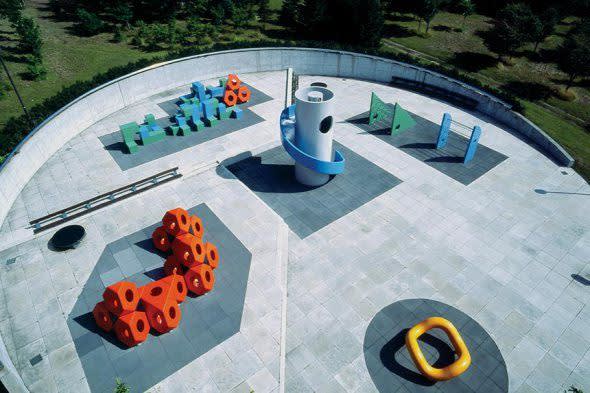
Isamu Noguchi
Playscapes in Piedmont Park, Atlanta, Georgia, 1976
Which historical figures come to mind when considering the term ‘renaissance man’ in the context of the creative arts? Perhaps Andy Warhol is the obvious choice, but there are a handful of others who fit the qualifications just as well as the pop art polymath. One such figure as deserving of the accolade is Japanese American artist and architect Isamu Noguchi, whose work set a new standard for the reintegration of the arts throughout the 20th century.
With a career spanning over six decades, it is hard to find a medium or creative discipline that Noguchi didn’t at one time explore. From designing stage sets for modern dancer Martha Graham and costumes for King Lear, to creating large-scale public works and collaborating with furniture manufacturer Herman Miller on a 1947 catalogue of objects considered to be the most influential, cohesive body of modern furniture ever produced, no project was too great, or too minor, for Noguchi to thoughtfully explore with lyrical and emotional expressiveness. On the latter end of this vast, theoretical spectrum lies a largely unknown body of work known as the Playscapes.
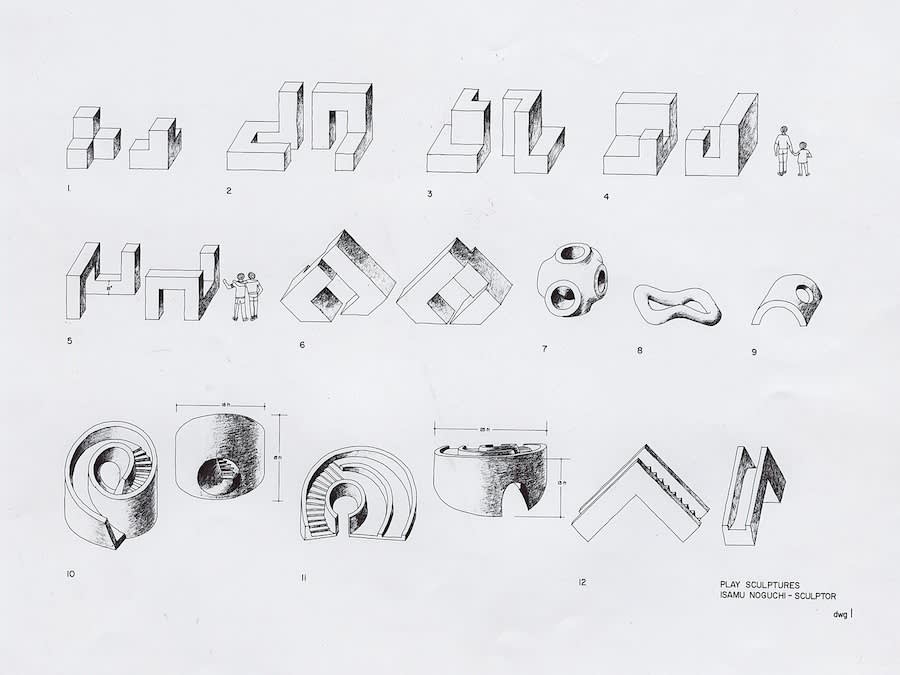
Isamu Noguchi
Drawings for Playscapes, 1966-76
Fascinated by the role of sculpture in the urban landscape, Noguchi believed that fine art should be brought into people’s everyday lives starting at childhood. His interest in the manners in which children at play creatively engage with spaces and objects inspired the artist to begin working on a series of youthful playgrounds and play sculptures that aimed to bring together a powerful combination of aesthetics, functionality, and human’s ability to play.
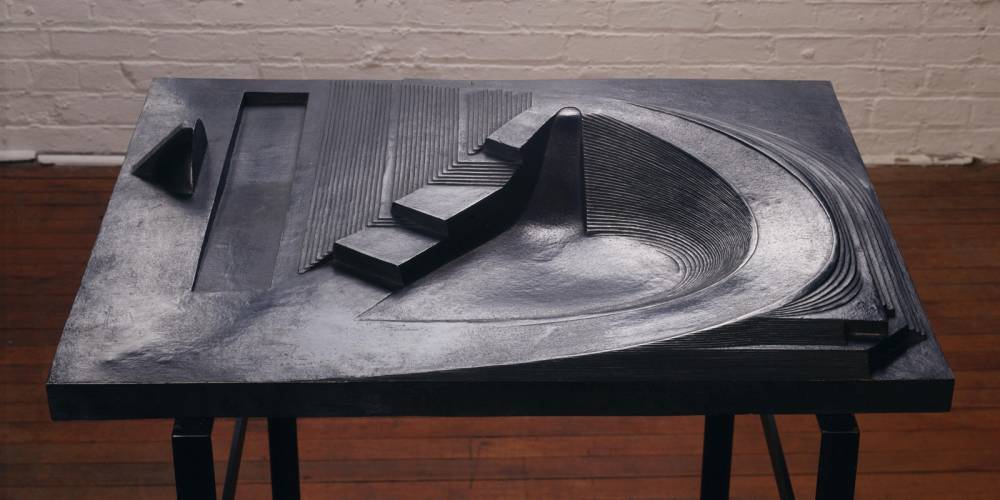
Isamu Noguchi
Model for Play Mountain, 1960s
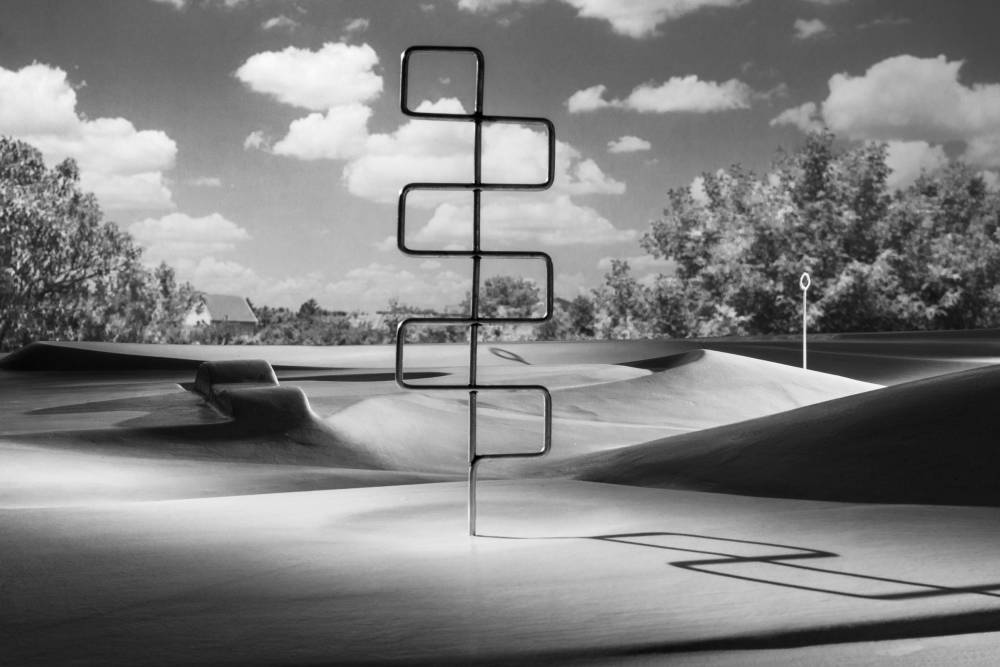
Isamu Noguchi
Contoured Playground
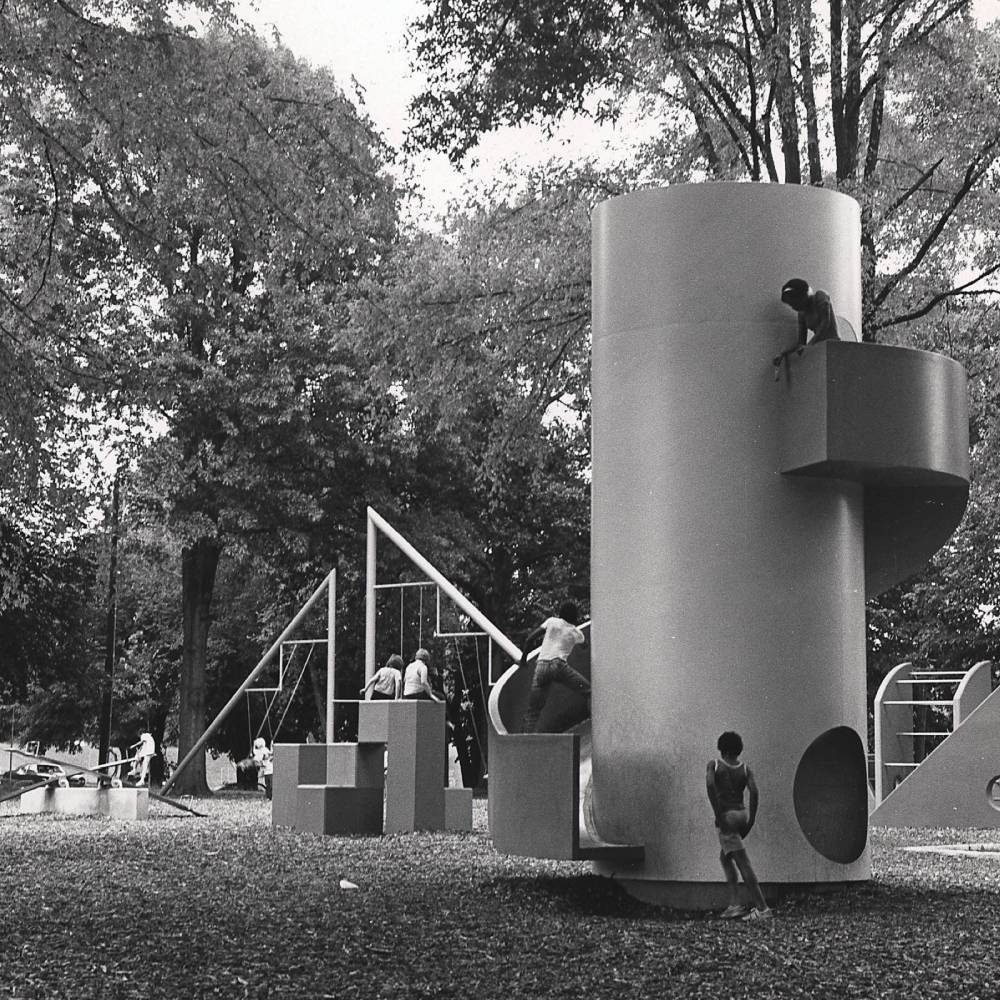
Isamu Noguchi
Playscapes in Piedmont Park, Atlanta, Georgia, 1976
Despite the solitary nature of much of Noguchi’s work, the artist maintained a career-long fascination with movement, believing that children’s play in public spaces could later support their active participation in society. Approaching the playground as a means of inspiring children to move, think, learn, interact, and explore the natural world, Noguchi also saw the medium as both an opportunity to teach and better the world through thoughtful design.
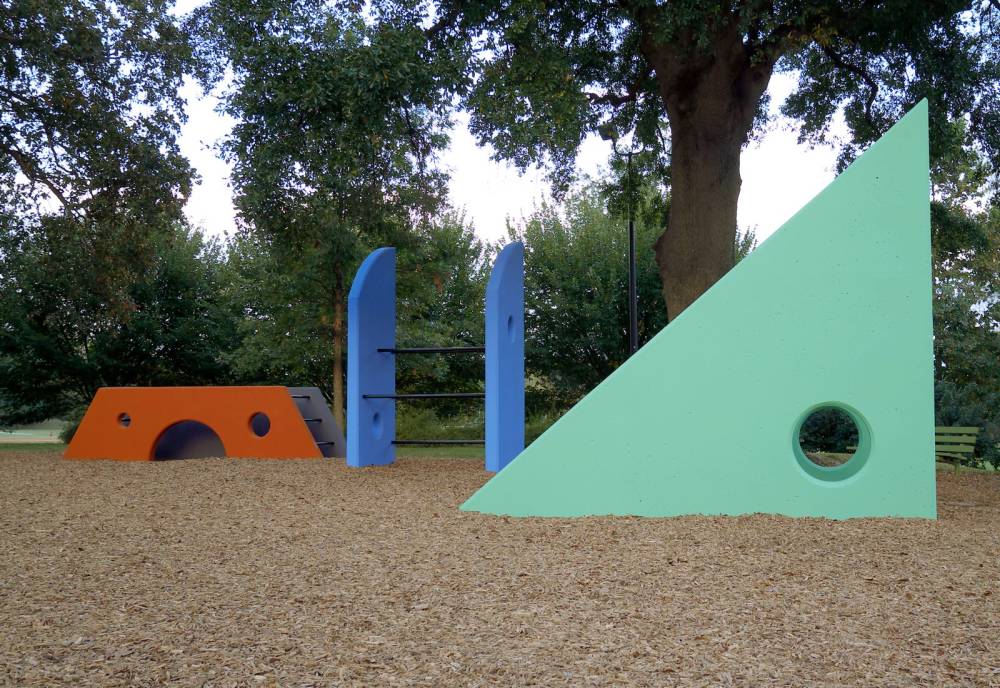
Isamu Noguchi
Playscapes in Piedmont Park, Atlanta, Georgia, 1976

Isamu Noguchi
Playscapes in Piedmont Park, Atlanta, Georgia, 1976
Though many of his earliest drawings were never realized, such as Play Mountain from 1933, Noguchi spent decades studying, designing, and redesigning playgrounds and safer play equipment for children. Responding to a critique of seesaws being too dangerous, in 1941 the artist modeled the ‘Contoured Playground’ which was made entirely of earth mounded, channeled, and hallowed into shapes. Expanding on this concept, throughout the 1940s and 50s Noguchi began utilizing “earth modulations” to construct compact landscapes for freeform play which he considered to be works of theoretical architecture.
Isamu Noguchi
Contoured Playground
Isamu Noguchi
Contoured Playground
Intended for New York City’s Central Park, Noguchi’s “Contoured Playground” was composed of a rolling landscape with gentle hills and subtle ridges that gradually sloped up from the ground to a defined edge and was noticeably absent of dangerous play equipment. After numerous attempts and subsequent failures of trying to get his design built in Manhattan, Noguchi redirected his efforts to the city of Tokyo, where his first completed playground ‘Kodomo No Kuni’ was erected in 1965 for the Japanese Children’s Year.
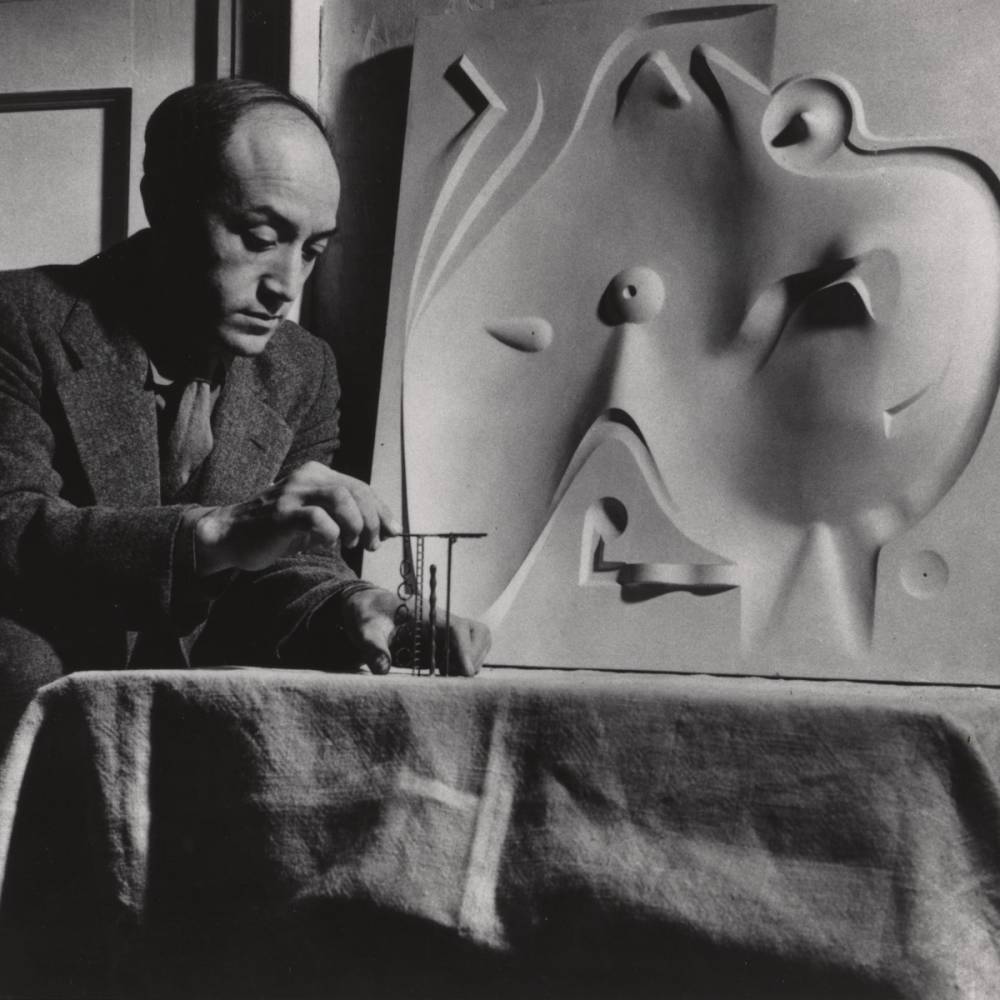
Isamu Noguchi
Model for Contoured Playground, 1946
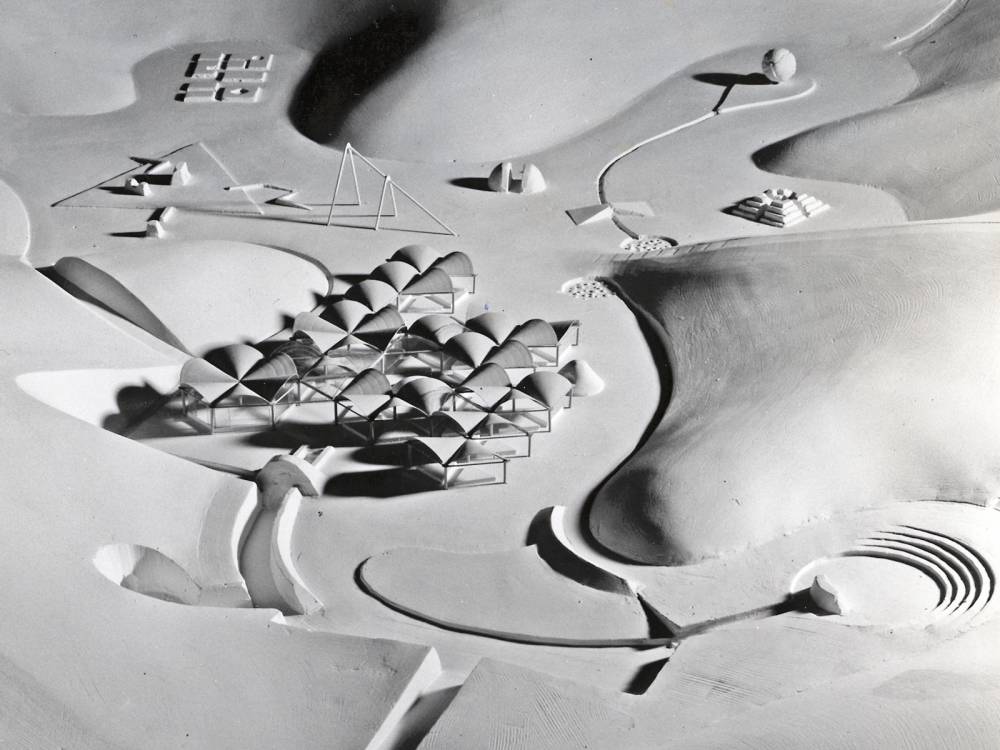
Isamu Noguchi
Model for Kodomo No Kuni, 1956-66
Despite the artist’s career-long study of playscapes and recreational activity areas for children, Noguchi’s only playground in the United States is located in Atlanta’s wooded Piedmont Park. Built in 1976, the colorful, architectural landscape is made up of flexible metal and concrete pieces that draw on Noguchi’s philosophy of space and notion that everything, even objects intended to be climbed on by children, has the capacity to be seen as a sculpture.
